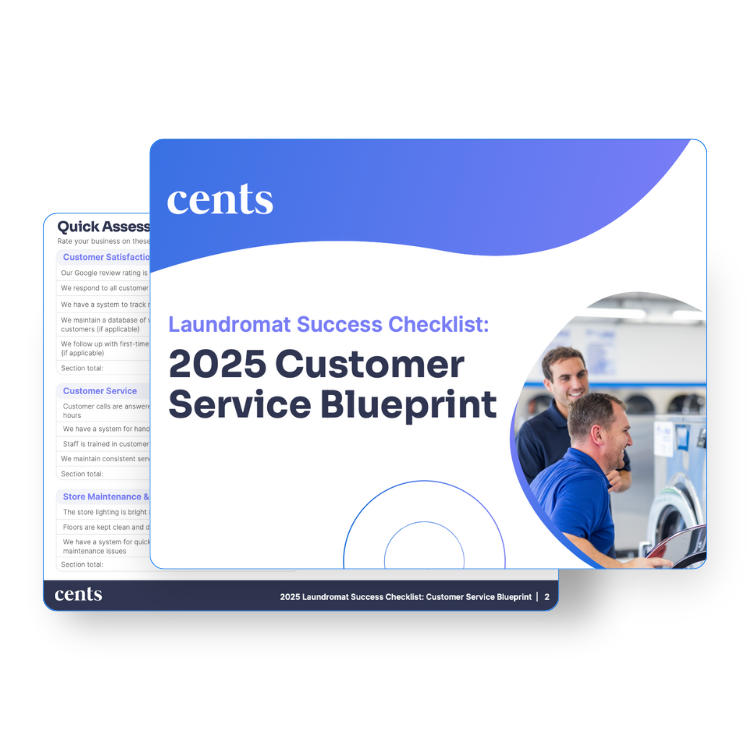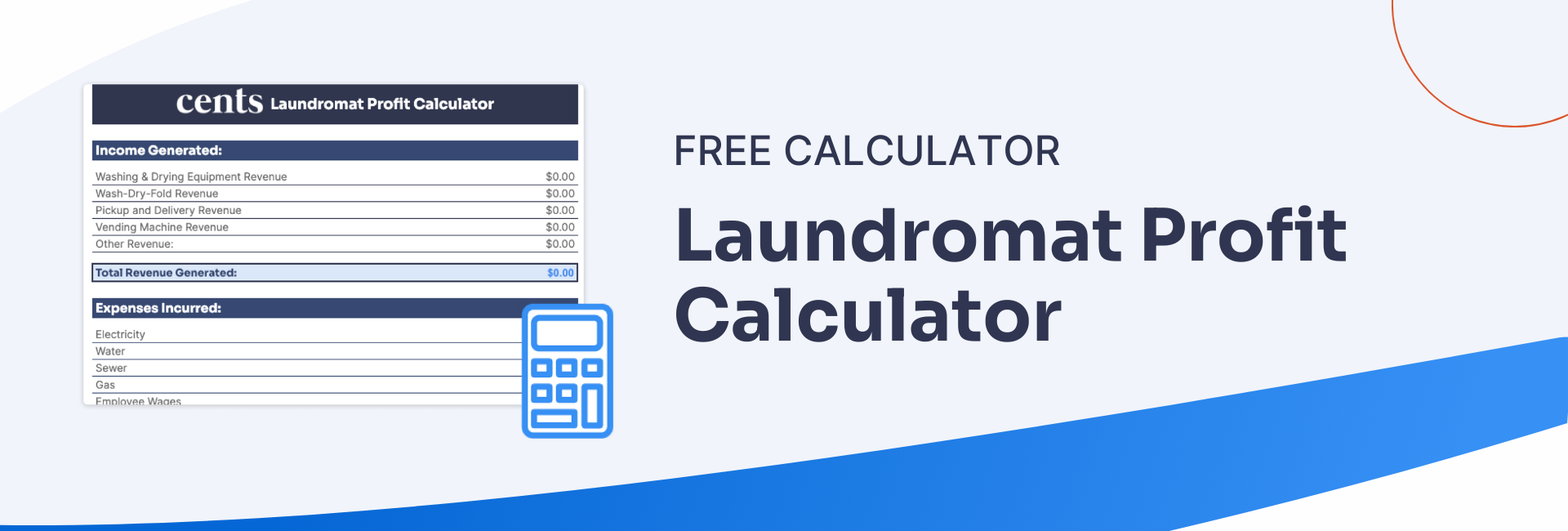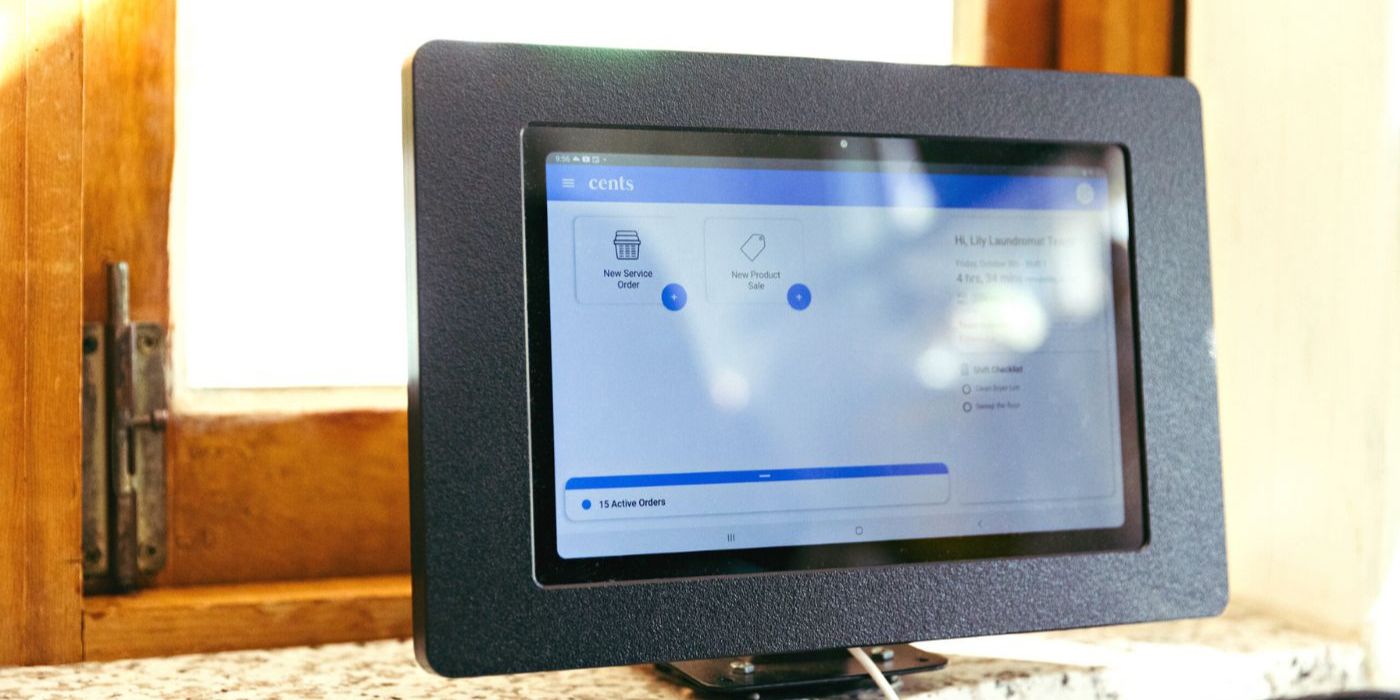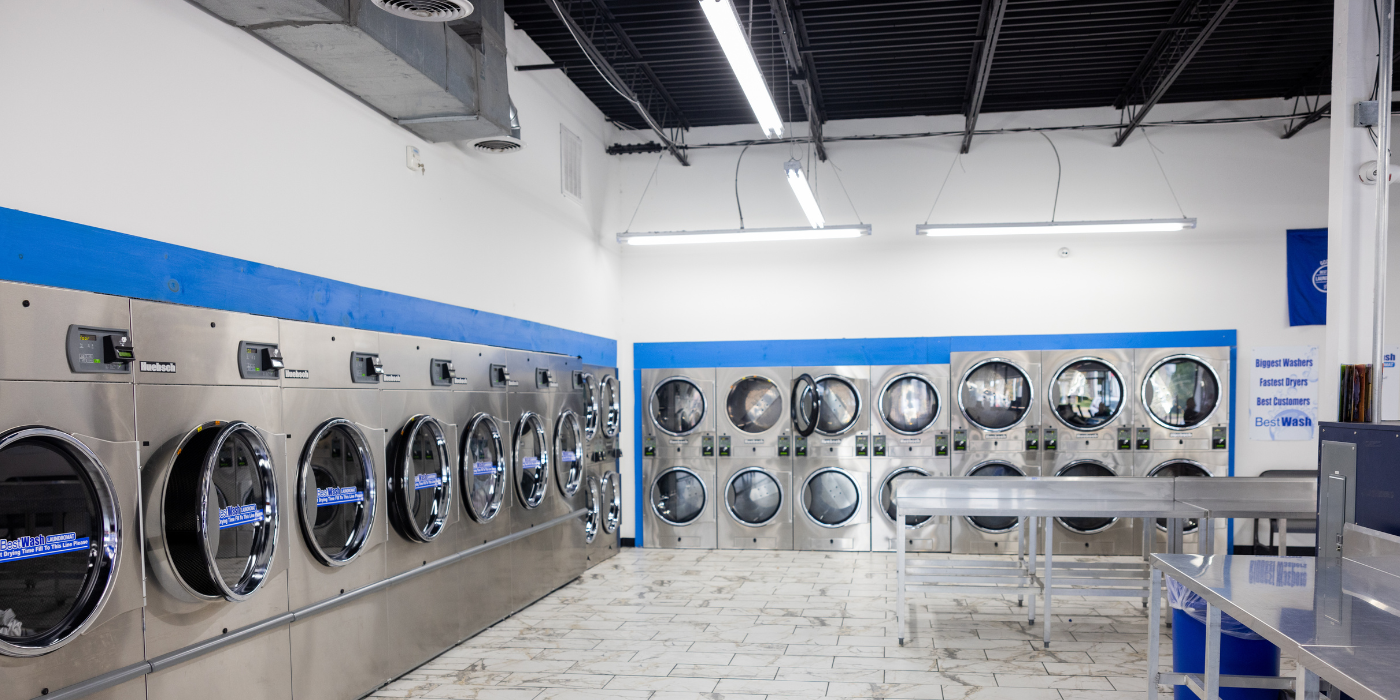In an industry like laundry, operational efficiency is key. Whether you’re optimizing workflows, training staff in laundry operations, or tracking laundry metrics, refining your process can lead to better productivity, customer satisfaction, and profitability.
The process of ironing out your laundry operations into a smooth, error-free workflow can turn your laundry business into an unstoppable force. Some of the benefits include:
-
Time Savings: Efficient operations can significantly save time, which can then be invested in other areas of the business such as strategic planning. Every minute saved is a minute earned in the laundry business!
-
Improved Cleanliness: A seamless workflow minimizes the chances of mistakes and enhances cleanliness standards. In the laundry world, the quality of your service is measured by the cleanliness of the laundry you deliver. If you can deliver a consistently superior service, you’ll build an infallible reputation.
-
Enhanced Customer Satisfaction: By delivering perfectly clean, neatly folded clothes every time, you’ll meet (or even exceed) customer expectations, in turn bolstering customer satisfaction and loyalty.
Achieving these high levels of efficiency requires hard work; but perhaps more importantly, it requires a deep commitment to the laundry process, continuous training, and modern tools. Keep reading for everything you need to know to implement efficient laundry operations and how digital tools can take your business to the next level.
Download our laundromat profit calculator to find out how much profit your laundromat is making each month, quarter, and year.
Laundry operations 101
Expertly cleaning a wide variety of fabrics and textiles is central to laundry operations. This is true in numerous contexts, from hospitality and healthcare to commercial laundries and residential settings.
In the hospitality industry, such as hotels and resorts, laundry operations ensure that guests have a constant supply of fresh, clean linens. This contributes significantly to the guest experience and overall satisfaction.
As for the healthcare sector, effective laundry operations help maintain the cleanliness and hygiene of linens and uniforms as well as play an instrumental role in infection control, so that all textiles used are safe and free from any potential disease-causing bacteria or viruses.
In commercial settings, laundry operations serve businesses like laundromats and industrial laundries that provide laundry services to various clients, including hospitals, hotels, restaurants, and other establishments.
And in a residential setting, laundry operations boil down to the process every household undergoes to keep their clothes and linens clean and fresh.
Regardless of the context, the key components of laundry operations are generally the same:
.jpeg?width=336&height=404&name=Blog%20Frame%20Templates%20(8).jpeg)
-
Sorting: Clothes are categorized based on their color, fabric type, and level of dirtiness. Proper sorting can prevent color bleeding, damage to delicate fabrics, and result in a more effective cleaning process.
-
Washing: Clothes are cleaned using a washing machine or by hand, depending on their fabric and care instructions. This process involves the use of detergents and water to remove dirt and stains.
-
Drying: Post-washing, clothes are dried either in a dryer or by air. Special care is taken to follow the drying instructions on clothes to prevent any shrinkage or damage to fabric.
-
Folding or Pressing: Once dried, clothes are either folded or pressed to give them a neat appearance. For commercial operations, this stage also often includes packaging and preparing items for delivery or pickup.
While these steps are straightforward, laundry operations can encounter several challenges. Stain removal is a common issue, with different stains requiring specific treatments. Understanding how to effectively treat a wide variety of stains is crucial to maintaining the quality of the fabric every time.
Garment care is another challenge that requires knowledge and experience. Not all garments are made equal—they come in different types of fabrics and colors, each with its own care instructions. For example, silk shouldn't be washed with regular detergent or be subjected to harsh spin cycles. Instead, it should be hand-washed with a mild soap and blotted gently with a towel to remove excess water, or better yet, dry-cleaned.
Wool is another tricky fabric that requires special care. It can shrink or become misshapen if washed in hot water or machine-dried. This fiber should be hand-washed in cool water with a detergent specifically designed for wool and laid flat to dry. Ignoring these instructions can lead to damage, color loss, changes in the garment's size and shape, and angry customers.
Must-have tools and equipment for operational success
Efficient laundry operations require specialized equipment and high-quality cleaning products in order to deliver consistently great results. Whether you’re serving residential, commercial, or institutional customers, these are some of the equipment and tool necessities to outfit your laundromat.
-
Commercial Washers: The cornerstone of any laundry operation, commercial washing machines come in a variety of models and sizes. They are typically larger than residential machines, designed to handle a significant volume of laundry, and run continuously. Their advanced features often include programmable settings that allow for custom cycles based on fabric types and levels of dirtiness, ensuring a thorough clean without damaging the fibers.
-
Dryers: After washing, the next critical equipment piece is the commercial dryer. Like their washing counterparts, commercial dryers are built to handle high-volume loads and dry them efficiently. Many models come with features like moisture sensors and heat settings to ensure that all items are dried thoroughly without over-drying, which can cause shrinkage or fabric damage.
-
Ironing Systems: In many operations, particularly within the hospitality and commercial sectors, an industrial ironing system is a necessity. These systems ensure that linens, uniforms, and other textiles are crisply pressed and free from wrinkles, presenting a professional and clean appearance. More intricate systems are capable of not only ironing but also folding and stacking items.
In addition to these core pieces of equipment, laundry operations also require an assortment of cleaning products to achieve that crisp, professional clean customers look for.
-
Detergents: The right detergent can make a considerable difference in the final product. Commercial detergents are formulated to tackle stubborn stains in large volume laundry loads. When choosing a detergent, consider factors such as the water hardness in your area and the types of fabric you typically wash.
-
Fabric Softeners: These are used to keep fabrics soft, reduce static cling, and leave the garment with a fresh smell. Make sure to choose a softener compatible with your wash load content and washer type.
-
Stain Removers: For those tougher stains that regular detergents can't quite tackle… enter specialized stain remover! Keep in mind, different removers are designed to target specific types of stains, so having a variety on hand can be a smart move.
Maintaining and troubleshooting your laundry equipment is another important aspect of efficient operations. In a perfect world, nothing ever goes wrong, wear and tear don’t exist, and your equipment fires on all cylinders all the time! But realistically, you should conduct regular inspections and maintenance to prevent build-up and clogs. Keep an eye and ear out for unusual noises or reduced performance, which could indicate a need for repairs or part replacements. Some basic knowledge in troubleshooting common issues can save downtime and costs associated with technician visits.
Laundromat Management: The Key to Operational Success
Effective laundry management lies at the heart of any successful laundry operation. Whether you're running a small laundromat or managing a large commercial laundry service, the way you oversee your processes, resources, and staff directly impacts your business's performance, customer satisfaction, and profitability.
Streamlining laundry processes
Whether you're running a small laundromat or managing a large commercial laundry service, the way you oversee your processes, resources, and staff directly impacts your business's performance, customer satisfaction, and profitability. Laundry management starts with optimizing workflows to ensure a seamless operation. This involves:
-
Defining Clear Steps: Establishing clear processes for sorting, washing, drying, folding, and delivery.
-
Standard Operating Procedures (SOPs): Creating standardized guidelines for employees to follow ensures consistency and reduces errors.
-
Task Prioritization: Identifying critical tasks and scheduling them efficiently to maximize productivity during peak hours.
Implement a business management system for laundry
 Historically, laundromat operations have been manual, time-consuming, and prone to errors. One of the most transformative tools for streamlining laundry operations today is a laundry management system. By introducing a robust software solution to your laundry operations, you can significantly increase efficiency and productivity in your business.
Historically, laundromat operations have been manual, time-consuming, and prone to errors. One of the most transformative tools for streamlining laundry operations today is a laundry management system. By introducing a robust software solution to your laundry operations, you can significantly increase efficiency and productivity in your business.
What’s special about a laundry management system is its ability to automate numerous tasks that would otherwise be manual and time-wasting. The result? Owners and operators can dedicate their valuable time and energy to things that drive growth—like customer service and strategic planning—instead of drivel!
Among the key features of laundry management software are comprehensive inventory management, advanced scheduling capabilities, and robust reporting functions:
-
Inventory Management: Through a digital platform, you can track the usage of cleaning products and equipment, spot patterns, and make informed decisions about when to restock. This prevents unexpected shortages and helps you avoid unnecessary expenditure on overstocking.
-
Scheduling: With a laundry management system, operators can easily schedule tasks, assign duties to employees, and monitor the progress of each operation. This allows for a smooth workflow, ensuring that no step gets missed or delayed.
-
Reporting: Reporting is an invaluable, yet often overlooked aspect of any laundry operation. With laundry management software, operators gain direct visibility into business performance, such as operational costs, productivity rates, and revenue. This data can be used to make strategic decisions and detect areas for improvement.
Another great advantage of a laundry management system is its ability to simplify complex tasks:
-
Order Tracking: Managing orders can be an overwhelming task, especially for larger operations. With a laundry management system, orders can be easily tracked, monitored, and managed digitally, enhancing efficiency and customer satisfaction.
-
Customer Communication: Maintaining clear and consistent communication with customers is of the utmost importance. Through automated notifications, updates, and reminders, a laundry management system keeps a constant line of contact with your customers so they never feel out of the loop on the status of their laundry.
-
Billing: Calculating costs, creating invoices, and processing payments can be a time-suck. A laundry management system automates these processes, making them faster, easier, and more accurate.
The benefits of implementing a laundry management system are far-reaching, from improving operational efficiency to enhancing customer satisfaction. It's a worthy investment that can take laundry operations to the next level of productivity and success.
Optimize workflow with technology
In an outdated industry like laundry, harnessing the power of technology can help you optimize your workflow and thrust you to the very front of the pack. With the right innovative tools, you’ll be able to dramatically streamline laundry processes, improve efficiency, and reduce the need for manual labor, with no more than a few clicks.
One example of this is RFID (Radio Frequency Identification) tagging systems. These systems allow for efficient garment tracking and sorting, making inventory management a breeze. Here's how they work:
-
Each garment is attached with a unique RFID or barcode tag that contains information about the garment, such as its type, material, and cleaning instructions.
-
The tagged items can then be quickly scanned and sorted, saving considerable time and reducing the chances of human error.
-
RFID tags have an added advantage: they can be read from a distance and through other materials, which allows for bulk scanning and real-time tracking of inventory.
Another significant technological advancement that has proven beneficial in the laundry industry is the integration of automation tools like conveyor systems or robotic assistance.
-
Conveyor Systems: Automated conveyor systems can transport large volumes of laundry from one process to another, eliminating the need for manual handling and reducing the risk of workplace injuries. It also speeds up the overall laundry process, increasing operational efficiency.
-
Robotic Assistance: Robotic technologies can assist in tasks such as folding or sorting laundry, again reducing manual labor and increasing efficiency. They work round-the-clock, improving productivity and offering consistent performance. Imagine getting laundry done in your sleep?!
Smart machines are another tool revolutionizing the way laundry operations function. Modern commercial washers and dryers often come with programmable cycles that allow for customization based on the specific needs of each load. This opens the door to optimal cleaning results while preserving the lifespan of the fabrics and the efficiency of the equipment and products. These smart machines also offer remote monitoring capabilities. Managers can check the status of the machines, troubleshoot problems, and even alter settings from anywhere, using a smartphone or a computer.
This level of control and flexibility significantly improves the efficiency of the laundry process. By investing in these solutions, you can enhance productivity, reduce operational costs, and deliver better results to your customers.
Put data analysis at the center of decision making
Data analysis is the secret sauce for streamlining laundry operations. With the help of advanced tools like Cents OS, laundromat owners can now gather, analyze, and interpret data to improve inefficiencies that go undetected by the naked eye.
The role of data analysis in optimizing laundry processes
Every aspect of the laundry process, from customer order placement to order fulfillment, generates valuable data. Analysis is the process of finding meaning in this data and using it to improve operations and capitalize on your strongest revenue generators. For instance, data on the time taken to process different types of orders can help identify inefficiencies and scope for process optimization. Similarly, data on peak usage hours can help in better managing resources and enhancing customer satisfaction.
Cents Business Management Software is designed to capture and analyze these key metrics, providing valuable insights for decision-making. By automating data collection and analysis, Cents OS makes it easier for laundromat owners to identify and address inefficiencies.
Importance of tracking key metrics
To leverage the full power of data, it's important to track key performance metrics. Metrics like turnaround time, equipment utilization, and resource consumption offer vital insights into the efficiency of laundry operations.
Turnaround time measures the time taken from receiving a customer's laundry to its delivery after cleaning. Monitoring this metric helps laundromat owners deliver speedy service and high customer satisfaction.
Equipment utilization helps understand how effectively the laundry equipment is being used. Low utilization might indicate a need for promotional activities to increase demand, while high utilization may suggest the need for additional equipment to meet the demand.
Tracking resource consumption, like water and energy, can provide insights into operational efficiency and help identify opportunities for cost savings and sustainability.
Cents Business Management Software user-friendly interface provides at-a-glance views of turnaround times, equipment utilization, and resource consumption, enabling you to immediately identify any outliers or areas of concern in your laundry business.
Leveraging data-driven insights
-1.jpg?width=250&height=250&name=Blog%20Frame%20Templates%20(3)-1.jpg) Data-driven insights empower laundry business owners to make informed decisions. By finding bottlenecks in the laundry process, resources can be allocated more efficiently, leading to improved productivity and increased profits. For example, if data reveals that a specific stage of the cleaning process consistently causes delays, you can come up with strategies to make that stage more efficient.
Data-driven insights empower laundry business owners to make informed decisions. By finding bottlenecks in the laundry process, resources can be allocated more efficiently, leading to improved productivity and increased profits. For example, if data reveals that a specific stage of the cleaning process consistently causes delays, you can come up with strategies to make that stage more efficient.
Data analytics also facilitates trend spotting. This could mean identifying busier days of the week, understanding which services are most popular, or even discerning customer preferences for drop-off or pick-up times.
Cents Business Management Software uses advanced algorithms to spot trends and patterns, providing actionable insights that can guide promotional activities, staffing adjustments, and operational strategies.
Predictive maintenance and data analytics
One innovative way data analytics is revolutionizing the laundry business is through predictive maintenance. By analyzing data on equipment usage and performance, potential issues can be detected before they cause equipment breakdown.
For instance, if data shows that a particular machine is taking longer than usual to complete cycles, it may be an early sign of a mechanical issue. With this insight, owners can schedule maintenance before a complete breakdown occurs.
Cents Business Management Software continuously monitors equipment performance data and uses machine learning algorithms to predict potential issues before they cause significant problems. By doing this, the software not only reduces downtime and ensures smooth operations but also extends the lifespan of your equipment.
Prioritize employee training and adoption
The effectiveness of a digital solution like Cents OS is as good as its adoption rate. For businesses to fully capitalize on their potential, employees should be well-versed with the new system and able to navigate it effortlessly. This is why employee training and adoption are pivotal aspects of implementing a laundry management system.
Importance of comprehensive employee training
Employee training is the fuel for a successful technology implementation. Take the time to make sure employees are comfortable with the new system, understand its functionalities, and can use it to its full potential.
From using the POS system to generating reports and troubleshooting problems, employees should be equipped with the necessary skills to operate the laundry management software efficiently. Remember, raining should not be a one-time process but rather an ongoing activity that keeps employees updated with new features and upgrades.
Empowering staff through digital literacy
-1.png?width=225&height=250&name=Blog%20Frame%20Templates%20(5)-1.png) Empowering staff to navigate digital tools is critical in today's technology-driven world. Digital literacy not only improves efficiency but also opens up avenues for innovation and problem-solving. With the support, employees can maximize the potential of a laundry management system like Cents OS, leading to improved operational efficiency and superior customer service.
Empowering staff to navigate digital tools is critical in today's technology-driven world. Digital literacy not only improves efficiency but also opens up avenues for innovation and problem-solving. With the support, employees can maximize the potential of a laundry management system like Cents OS, leading to improved operational efficiency and superior customer service.
Digital skills also boost employee engagement. Employees who are comfortable using technology are more likely to be engaged in their work. They feel empowered and appreciated, which can lead to higher job satisfaction and retention.
Don’t underestimate the power of effective change management
Change, while necessary, can often be met with resistance. Here are a few tips to help manage this transition smoothly:
-
Clear Communication: From the get-go, communicate the rationale behind implementing the new system, the benefits it will bring to the employees, and the business as a whole. New software will make team members’ lives easier by cutting back on the tedium. Open and transparent communication reduces uncertainty and fosters a culture of acceptance.
-
Ongoing Support: Offer continuous support to employees during the transition phase. This could involve offering additional training sessions, designating leaders to help others, or setting up a helpdesk to address questions and concerns.
-
Feedback Channels: Establish clear channels for employees to voice their feedback and concerns about the new system. Employees who feel heard are more likely to accept change and adopt the new system. Their feedback could also provide valuable insights to improve the system and make it more user-friendly.
-
Patience and Encouragement: Understand that mastering a new system takes time. Encourage employees and appreciate their efforts during the transition. Patience and positivity can help with a smooth transition.
The successful implementation of a laundry management system like Cents OS is dependent on your employees’ buy-in and how well they’re trained. With comprehensive training and effective change management, you can facilitate a smooth transition that sticks, resulting in increased productivity, superior service, and ultimately, a thriving business.
How to keep your laundry operations up-to-speed
The laundry industry is dynamic and constantly evolving. To stay competitive, businesses must continuously strive to improve their operations and adapt to inevitable changes. Implementing a laundry management system like Cents Business Management Software is not a one-time activity, but rather a journey of continuous improvement and adaptability.
Embracing a culture of continuous improvement
Continuous improvement means perpetually seeking ways to enhance operations and elevate customer experiences. For laundromat owners, this might involve constantly analyzing data gathered from the Cents OS platform, seeking to understand how the existing processes can be refined, or exploring new ways to offer better service to customers.
Regular reviews and feedback implementation
To foster continuous improvement, regular reviews of processes and operations are essential. It's important to analyze key performance indicators (KPIs) and customer feedback to identify areas that require improvement or modification. Likewise, actively seeking and implementing feedback from front-line employees can lead to substantial improvements.
Staying on top of technology and industry trends
The digital world moves fast, and to keep up, business owners must stay updated with emerging technologies and trends in the industry. For laundromat businesses, this might mean keeping an eye on advancements in laundry technologies, eco-friendly practices, new marketing strategies, or evolving customer expectations.
A new era of streamlined laundry operations
The digital transformation of the laundry industry, embodied in advanced systems like Cents Business Management Software, has ushered in a new era of streamlined laundry processes and efficiency.
One of the biggest advantages of incorporating technology is the automation of manual and time-consuming tasks. This not only reduces the opportunities for human error but also allows owners and operators to focus on core aspects of their business such as strategic planning and enhancing customer service. The ability to track key performance metrics and analyze data provides a bird's eye view of your operations, unearthing insights that can lead to improved workflows and greater efficiency.
Mastering laundry management through effective training, strategic use of laundry operation tools, and tracking key metrics will help transform your business. With advanced tools like Cents Business Management Software, you can optimize your processes, improve efficiency, and build a thriving, customer-centric operation.
Download our laundromat profit calculator to find out how much profit your laundromat is making each month, quarter, and year.
.png)

-3.png)








